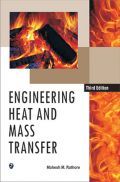Environmental Science Engineering by Arun Luiz T
Book Summary:
This book comprises of five units which covers the entire syllabus. Topics like ecosystems and biodiversity, environmental pollution, natural resources, social issues, and human population and environment. This book has been written in a simple and lucid manner. Most of these topics are traditionally taught in environmental science and engineering in several universities and institutes. Figures and tables are incorporated wherever necessary to make the concept clearer. This book also contains short questions with answers, review questions and a university question paper. The author hopes that this book will be useful for both students and faculty alike.
Audience of the Book :
This book is Useful for Engineering Students.
Key Features:
The main features of the book are as follows:
1. This book will provide direct and systematic knowledge of Environmental Concepts, Theories, Considerations, Issues, and Actions through classroom and outdoor learning.
2. This book will also stimulate among students, a true love for nature by encouraging them to undertake Project Formulation, Surveys, Observations, Interviews, Field Trips, Collection, Compilation, and Documentation of Mindi Research Activities.
3. With the expression of intrinsic abilities for fact-finding through classroom and outdoor learning, students can bring about improvements in their local environmental.
Table of Contents:
1. Environment, Ecosystems and Biodiversity
1.1 Environment Studies: Definition, Scope, and Importance
1.2 Hazard and Risk
1.3 Ecosystems
1.4 Structural Aspects of Ecosystems
1.5 Function of Ecosystems
1.6 Major Ecosystem Types
1.7 Biodiversity
1.8 Levels (Types) of Biodiversity
1.9 Values (Importance) of Biodiversity
1.10 Classification of Species.
1.11 Hot Spots of Biodiversity
1.12 Red List of Threatened Species (Red Data Book).
1.13 India As a Mega Diversity Nation
1.14 Biogeographical Classification of India
1.15 Threats to Biodiversity
1.16 Conservation of Biodiversity
2. Pollution
2.1 Introduction
2.2 Atmosphere
2.3 Oxygen and Ozone Chemistry
2.4 Air Pollution
2.5 Smog
2.6 Acid Rain
2.7 Particulate Pollution
2.8 Air Pollution Control Devices
2.9 Emission Control of NOx, CO, HC
2.10 Indoor Air Pollution
2.11 Air Pollution – Case Study
2.12 Water Pollution.
2.13 Waste Water Treatment
2.14 Water Pollution – Case Studies
2.15 Soil Pollution
2.16 Solid Waste Management
2.17 Marine Pollution
2.18 Noise Pollution
2.19 Thermal Pollution
2.20 Nuclear Hazards
2.21 Nuclear Hazards – Case Studies.
2.22 Role of an Individual In the Prevention of Pollution
3. Natural Resources
3.1 Introduction
3.2 Forest Resources
3.2 Water Resources
3.3 Mineral Resources
3.4 Food Resources
3.5 Land Resources
3.6 Energy Resources
3.7 Equitable Use of Resources for Sustainable Lifestyles
3.8 Environmental Biochemistry
4. Social Issues and the Environment
4.1 Sustainable Development
4.2 Urban Problems Related to Energy
4.3 Water Conservation
4.4 Watershed Management
4.5 Resettlement And Rehabilitation Issues
4.6 Role of NGO
4.7 Environmental Ethics—Issues And Possible Solutions
4.8 12 Principles Of Green Chemistry
4.9 Climate Change
4.10 Waste Land Reclamation
4.11 Consumerism And Waste Products
4.12 Environmental Legislation
4.13 Enforcement Machinery Involved in Environmental Legislation.
4.14 Environmental Impact Analysis/Assessment
4.15 Ecomark
4.16 Diaster Management
4.17 Floods
4.18 Earth Quake
4.19 Cyclones
4.20 Tsunami


















